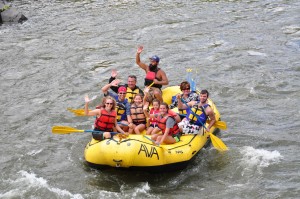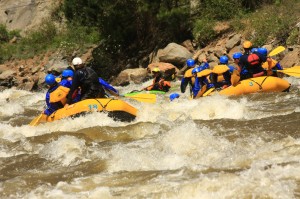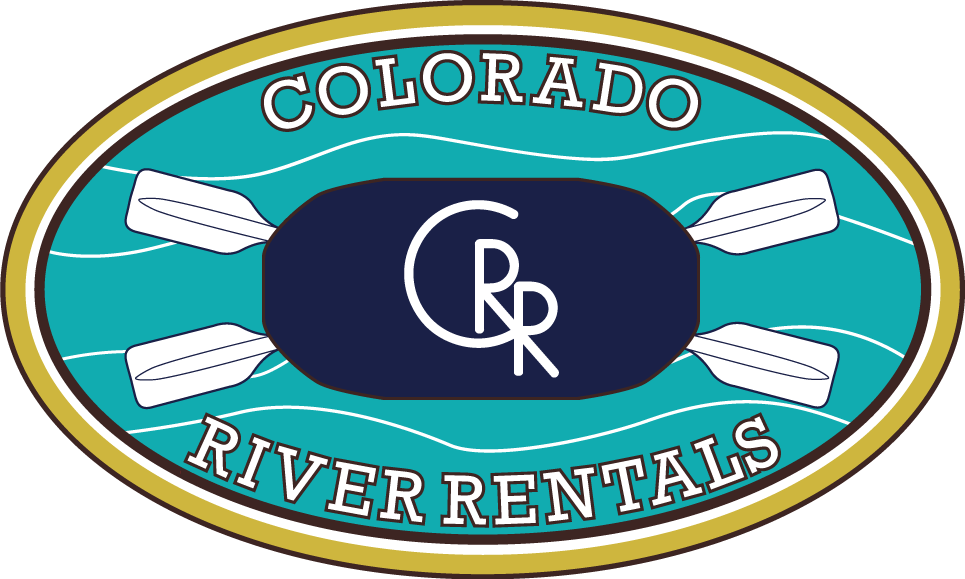The 5 Classes of Rapids Explained

Whitewater rafting, like any sport, has different classifications on the level of difficulty. For rafting, rapids are categorized into different classes.  The classes range from I-V, with class I being the easiest and class V the most difficult. Below you will find the 5 different classes of rapids explained.
The classes range from I-V, with class I being the easiest and class V the most difficult. Below you will find the 5 different classes of rapids explained.
- Class I: Smooth water with light riffles. Generally clear passages with occasional sand banks and gentle curves.
- Class II: Medium quick moving water. The rapids have regular waves. Class II requires a little maneuvering as there may be some rocks and ledges poking out. Our Upper Colorado trips are a great way to experience class II rapids!
- Class III: Continuous stretches of high waves and rapids are present. Rocks and eddies exist with clear narrow passages and require experience to run.
 Brown’s Canyon on the Arkansas River is a solid class III that is a blast!
Brown’s Canyon on the Arkansas River is a solid class III that is a blast! - Class IV: Strong continuous rapids and standing waves with holes. Powerful and precise maneuvering is required.
- Class V: Long and violent rapids that follow each other almost without interruption. The river is typically filled with obstructions causing big drops and violent currents. Extremely steep gradient. Whitewater like this is found in the Lower Canyon, Pine Creek, and the infamous Gore Canyon.
- Class VI: Often considered unrunnable, or for extreme paddlers only. Paddlers face constant threat of death because of extreme danger. Navigable only when water levels and conditions are favorable.
Rafting is dynamic and challenging sport that provides great fun. However, rafting can also be mellow and relaxed. What determines your rafting experience is the class of rapids you plan on running. No matter the class of whitewater you plan on rafting, please paddle safe and smart.
plan on running. No matter the class of whitewater you plan on rafting, please paddle safe and smart.
